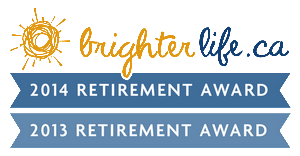How Well Do You Maintain Balance?
If trying to maintain balance in your life makes you feel like a tightrope walker, you’re not alone. Most of us have so many demands on our time and energy, life can feel like a three-ring circus. Take this quiz to see how well you are meeting responsibilities, while also recognizing and fulfilling personal needs and wants.
True False
1. The only way I can successfully manage my life is to take care of myself physically and emotionally.
2. Nurturing myself enlarges my capacity to help others.
3. I eat healthfully and exercise regularly.
4. I get check-ups, go to the dentist, and take preventative precautions.
5. I set aside personal, quiet time for myself, whether I’m meditating or simply letting my thoughts drift.
6. I experience the gifts of each season: ice skating, sledding, bundled-up beach walks; gardening, hiking, more time outside; camping, swimming, barbeques; harvesting the bounty, gathering wood, spending more time inside.
7. Creativity nurtures me, too. I do what I love, whether that’s cooking, drawing, painting, writing, dancing, singing or another creative pursuit.
8. Reaching out to others enriches my life. I spend quality time with family and friends.
9. Contributing to the world provides connection and purpose, so I give my time, energy and experience where it is most useful.
10. I notice and heed the emotional signals that tell me I’m out of balance: irritability, overwhelm, resentment.
11. If I feel that I’m catching a cold, I realize I may have stressed my immune system with overactivity, so I stop and take care of myself.
12. When I need or want to, I say no to requests for my time.
13. I listen to and honor the requests my body makes for such things as a nap, a walk, green vegetables, hot soup.
14. If I have something planned for myself, I don’t just toss that aside when someone makes a request of me.
15. I’m busy, but I find time to do the things I want to do.
16. I’m happy. I regularly experience well-being, contentment, even joy.
If you answered false more often than true, you may want to take a look at the questions to which you answered false and see if you can incorporate something of its message into your life.
If trying to maintain balance in your life makes you feel like a tightrope walker, you’re not alone. Most of us have so many demands on our time and energy, life can feel like a three-ring circus. Take this quiz to see how well you are meeting responsibilities, while also recognizing and fulfilling personal needs and wants.
True False
1. The only way I can successfully manage my life is to take care of myself physically and emotionally.
2. Nurturing myself enlarges my capacity to help others.
3. I eat healthfully and exercise regularly.
4. I get check-ups, go to the dentist, and take preventative precautions.
5. I set aside personal, quiet time for myself, whether I’m meditating or simply letting my thoughts drift.
6. I experience the gifts of each season: ice skating, sledding, bundled-up beach walks; gardening, hiking, more time outside; camping, swimming, barbeques; harvesting the bounty, gathering wood, spending more time inside.
7. Creativity nurtures me, too. I do what I love, whether that’s cooking, drawing, painting, writing, dancing, singing or another creative pursuit.
8. Reaching out to others enriches my life. I spend quality time with family and friends.
9. Contributing to the world provides connection and purpose, so I give my time, energy and experience where it is most useful.
10. I notice and heed the emotional signals that tell me I’m out of balance: irritability, overwhelm, resentment.
11. If I feel that I’m catching a cold, I realize I may have stressed my immune system with overactivity, so I stop and take care of myself.
12. When I need or want to, I say no to requests for my time.
13. I listen to and honor the requests my body makes for such things as a nap, a walk, green vegetables, hot soup.
14. If I have something planned for myself, I don’t just toss that aside when someone makes a request of me.
15. I’m busy, but I find time to do the things I want to do.
16. I’m happy. I regularly experience well-being, contentment, even joy.
If you answered false more often than true, you may want to take a look at the questions to which you answered false and see if you can incorporate something of its message into your life.
